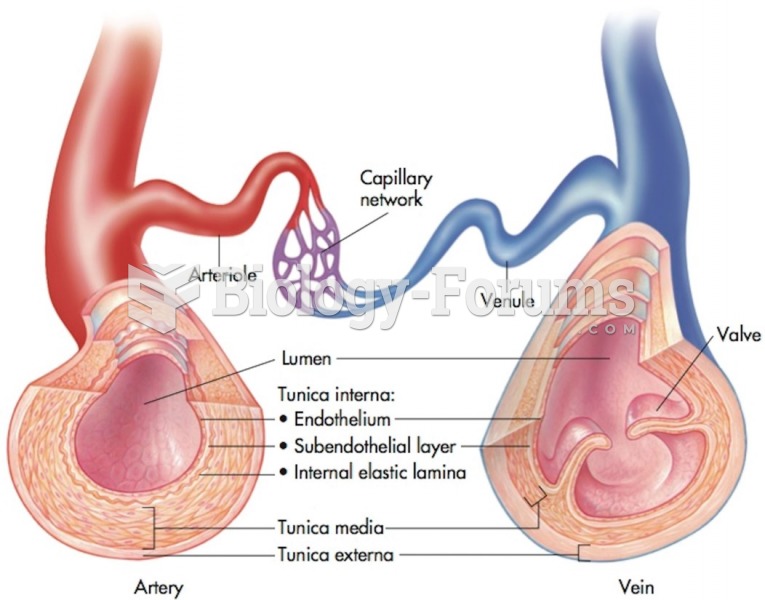This topic contains a solution. Click here to go to the answer
|
|
|
Did you know?
Blood is approximately twice as thick as water because of the cells and other components found in it.
Did you know?
The people with the highest levels of LDL are Mexican American males and non-Hispanic black females.
Did you know?
The first monoclonal antibodies were made exclusively from mouse cells. Some are now fully human, which means they are likely to be safer and may be more effective than older monoclonal antibodies.
Did you know?
More than 50% of American adults have oral herpes, which is commonly known as "cold sores" or "fever blisters." The herpes virus can be active on the skin surface without showing any signs or causing any symptoms.
Did you know?
The term pharmacology is derived from the Greek words pharmakon("claim, medicine, poison, or remedy") and logos ("study").
 Capillaries act as bridges between the arteries and veins. Valves in the veins prevent backflow as ...
Capillaries act as bridges between the arteries and veins. Valves in the veins prevent backflow as ...
 This training vehicle fell from the hoist because the pads were not set correctly. No one was hurt, ...
This training vehicle fell from the hoist because the pads were not set correctly. No one was hurt, ...





